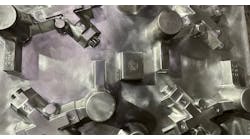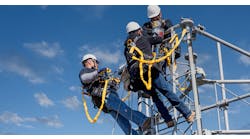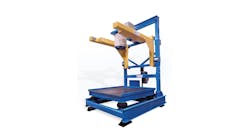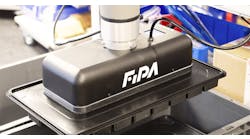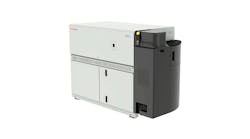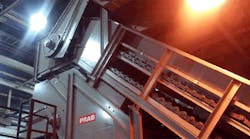Improving conveyor operations is one way foundry managers have reduced cycle times, raised productivity, decreased downtime, and improved workplace safety. Notwithstanding, not all conveyors are engineered to deliver equal performance. Following are three aspects of conveyor design, construction, and capabilities that metalcasting operations should consider when pursuing conveyance enhancements.
1. Impact on productivity, efficiency. Without question, automated material handling equipment improves productivity. Using the right conveyor for the application criteria has been shown to increase productivity by 60%. Reliable, consistent operation is the key.
Above all, conveyors must be engineered to avoid unplanned downtime. Ensuring a positive discharge of material is critical to preventing carryover. Steel belt conveyors, for example, are more susceptible to carryover because of how the belt is constructed, whereas oscillating conveyors generally have no carryover. PRAB Inc.’s ScrapVeyor II™ also eliminates carryover by adopting a drag flight to pull the material toward the discharge point. The flights pivot out of the way to dislodge anything that is stuck to them.
Energy consumption is another factor to consider. Furnace feeders that continuously meter-feed die scrap into the melting furnace contribute to greater energy efficiency because no additional energy is required to heat the furnace for individual melting cycles. Quench conveyors are another example. When chillers are installed on these conveyors, operators have greater control of water consumption costs.
2. Worker safety. Amid the skilled labor shortage facing the manufacturing industry, taking steps to prevent health and safety hazards is an important aspect of developing a work environment that fosters employee retention.
Adding conveyors to eliminate manual processes for moving metal inherently improves workplace safety. Forklift traffic is reduced, production becomes more ergonomic, and in the case of a furnace feeder, the conveyor helps keep operators a safe distance away from the high temperatures of melting furnaces. In fact, operations that added conveyors to their facilities have been shown to reduce workplace accidents by 25%.
There are additional factors to consider for conveyors used in foundry and diecasting processes. Water-quench conveyors, which cool parts and metal scrap quickly, can produce mist that diminishes air quality in the plant. Alternatively, casting coolers run at low speeds to air-cool hot diecastings via single or multiple cooling zones, though they may not be practical in all applications.
3. Quality construction and maintenance requirements. If a conveyor isn’t built to provide a long service life, structural deficiencies that contribute to equipment failures will result in unplanned downtime. Conveyors engineered to minimize or streamline routine maintenance will have lower lifecycle costs and decrease downtime. During times when supply chain challenges may delay shipments of replacement parts, or technicians may be difficult to schedule, conveyors that are easy to maintain and deliver a long service life contribute to overall profitability. Here are a few things to look for to get the most out of conveyor equipment:
• Heavy-duty, abrasion-resistant construction materials and high-quality welds;
• Design features that provide reinforcement and/or reduce impact, such as special supports and belt-reinforcing impact plates;
• Belt-tracking enhancements, such as track and wear bars, that promote precise belt tracking and longer belt life;
• Conveyors with a single chain instead of two, such as the PRAB ScrapVeyor II™, result in fewer moving parts to maintain;
• Auto-lube systems that automatically grease bearings improve bearing performance and eliminate maintenance required for manual greasing;
• If manual greasing is required, the lubrication points should be easy to access; and
• Overload protection to prevent an excessive payload from overtaxing the conveyor motor.
With a 5% compound annual growth rate (CAGR) projected for aluminum diecasting (2021-2028), and a projected +8% CAGR for the North American steel casting market projected through 2027, metalcasters need to dial in every aspect of production to retain a competitive advantage.
Conveyors may not seem to merit intensive research, but a conveyor that is not optimized for metalcasting applications will ultimately lead to inefficient processes, increased maintenance, and higher labor costs. By choosing a conveyor that eliminates carryover, minimizes belt maintenance, reduces health and safety hazards, and is constructed to provide a long service life, casting operations position their plants to increase uptime.
Finally, in many cases, customized solutions are necessary to achieve meaningful results. Consulting with a total solutions provider of material handling equipment to identify the needs of the application, footprint limitations, energy considerations and more, is a more holistic approach to long-term operational improvement.
Bob Anspaugh is a Conveyor Sales Engineer for PRAB Inc., Kalamazoo, MI. Contact him at [email protected], or visit www.prab.com
